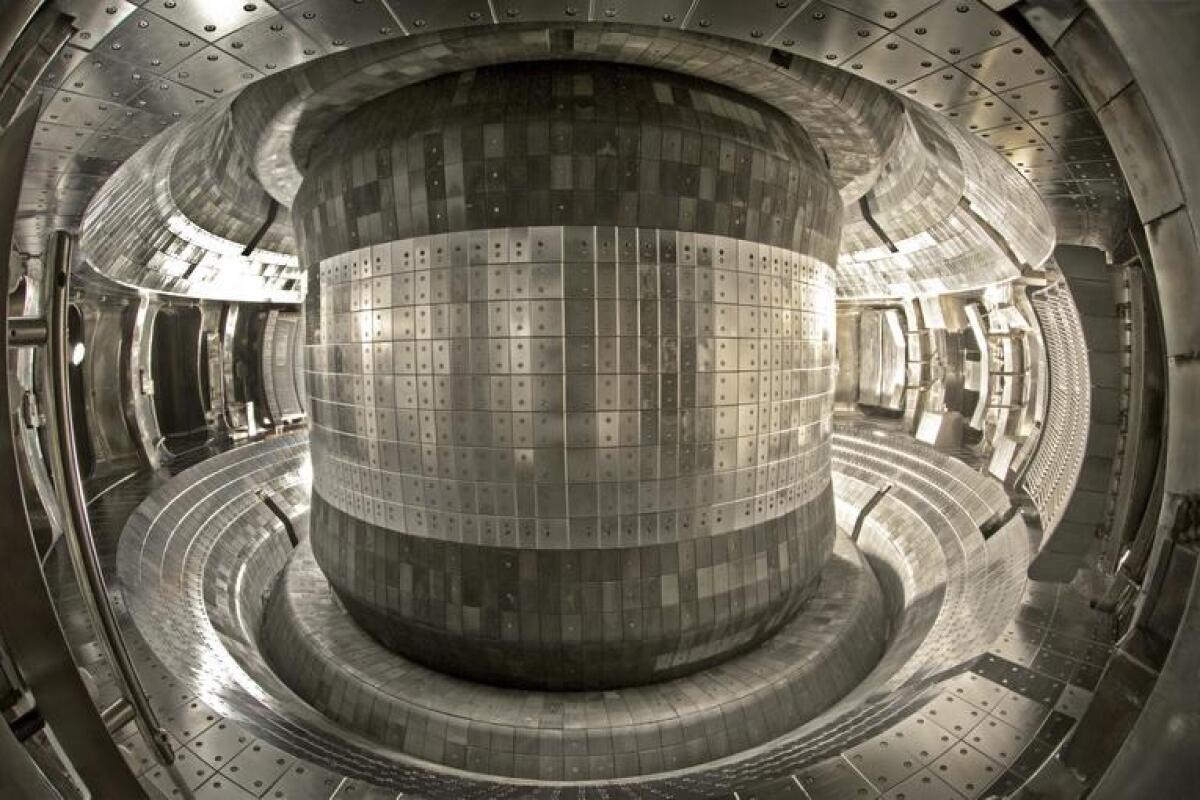A bit of friendly competition never hurt anyone. China's EAST tokamak and Germany's Wendelstein 7-X aren't exactly fusion energy's answer to Messi and Ronaldo, but through their own flashes of individual brilliance the reactors might one day command the world's attention in a much more important way. Wendelstein 7-X made headlines last week after generating a quarter-of-a-second pulse of hydrogen plasma, and now scientists at China's Institute of Physical Science have reportedly flexed their fusion muscle to sustain the gas for an impressive 102 seconds.
Experimental reactors like China's Experimental Advanced Superconducting Tokamak (EAST) have been used as vehicles to pursue abundant, clean nuclear fusion power for decades. Inside these hollow, doughnut-shaped chambers, hydrogen gas is superheated to temperatures rivalling our Sun to produce plasma, which is contained by powerful magnetic fields. If it can be held in place for long enough periods, this hydrogen plasma may one day be harnessed to provide a practically inexhaustible source of energy.
In a recent experiment at China's Institute of Physical Science, it is claimed physicists were able to heat plasma in the EAST to around 50 million Kelvin, more than three times the temperature of our sun's core, and sustain it for 102 seconds. The idea behind experiments such as these is to recreate the nuclear fusion that occurs in stars, where atomic nuclei collide and fuse together to form helium atoms, releasing huge amount of energy in the process. EAST's publicly stated goal is to reach 100 million Kelvin and hold plasma for more than 1,000 seconds (around 17 minutes).

Truth be told, EAST's plasma has been outstripping Wendelstein 7-X's best effort since before Germany's €1 billion (US$1.1 billion) reactor was even constructed. Back in 2013, scientists reported a then record-breaking 30 second pulse of high-temperature plasma. They claimed this was a result of a new technique that reshaped the magnetic field lines that confine the plasma, and new internal coatings that stopped it drifting into the outer walls and collapsing.
But another possible pathway to creating a stable environment for plasma to endure is the development of stellarator reactors. This design, adopted for the Wendelstein 7-X, instead drives the plasma through a twisted magnetic field that is engineered to constantly force the plasma stream into the center of the vessel to better avoid disruptions.
Equipped with 50 superconducting coils, the Wendelstein 7-X is designed to offer more than the relatively short bursts of plasma served up by tokamak reactors thus far. Last week's achievement, where a 2-megawatt pulse of microwave heating converted hydrogen gas into plasma at 80 million degrees for a quarter of a second, marks only the beginning of its scientific operation. The team has a series of upgrades planned over the next four years as it works towards its ultimate goal of achieving 30 minute discharges.
But while these two separate projects are at the forefront of nuclear fusion research, to measure their progress simply through discharge times is overly simplistic, and something of an apples and oranges comparison. As Dr Matthew Hole, senior fellow at the Centre for Plasmas and Fluids at Australian National University explains, there are a number of factors to consider.
"These are impressive feats in their own right, but they are different geometric problems using different magnetic confinement concepts," he tells Gizmag. "One is twisted and one is a straight doughnut. They have different performance properties, but common to both of them, in addition to ultra long pulses, is you want high temperature, high density and long energy confinement times. This is great progress, but the next step is ITER."
ITER (International Thermonuclear Experimental Reactor) will be the largest tokamak fusion reactor in the world. The product of a collaboration between 35 countries, it is planned to be the first fusion device to produce net energy and is expected to begin operations in 2027.
Source: Institute of Physical Science via South China Morning Post





